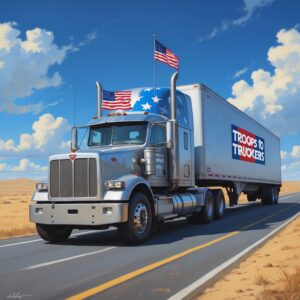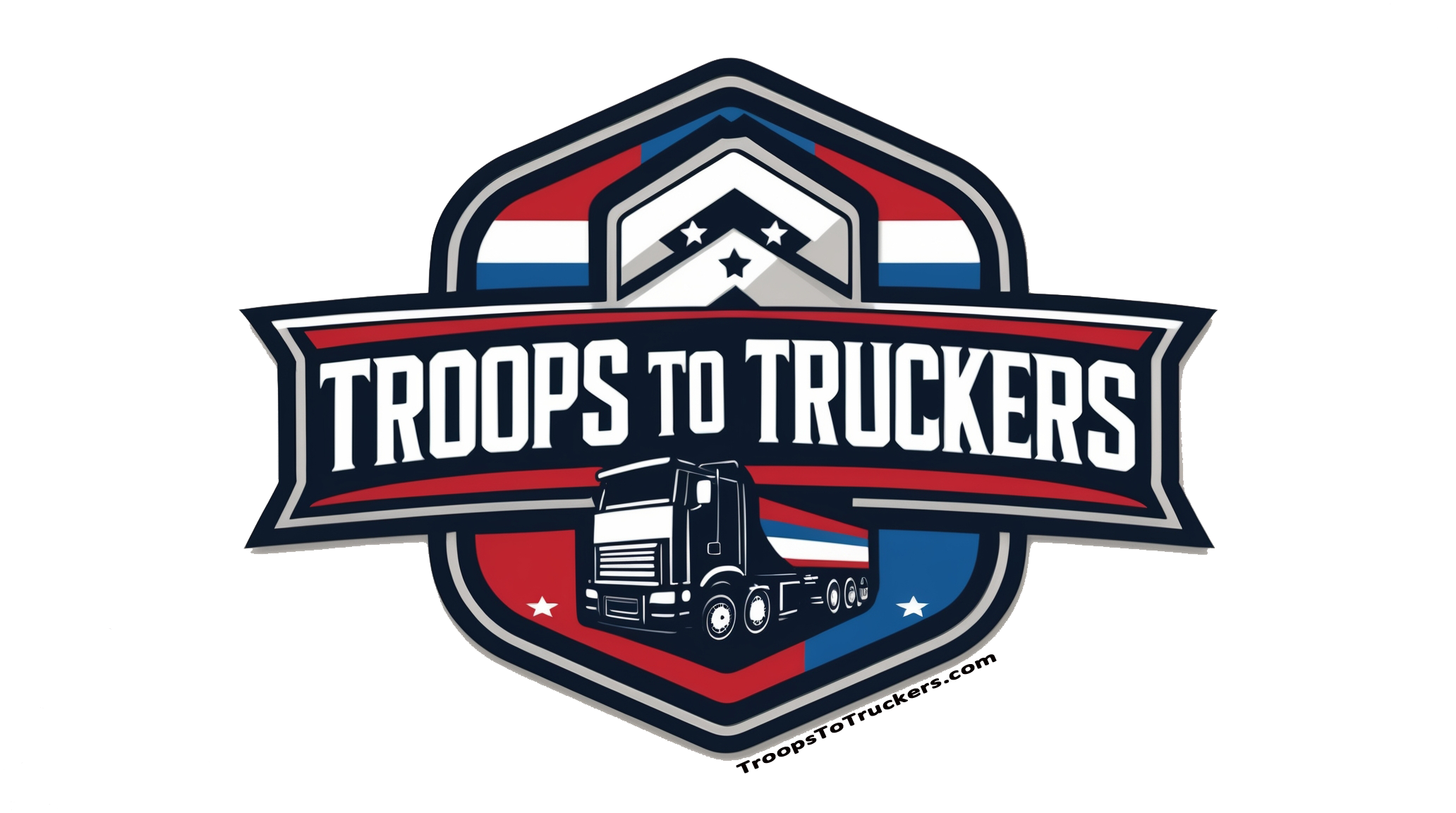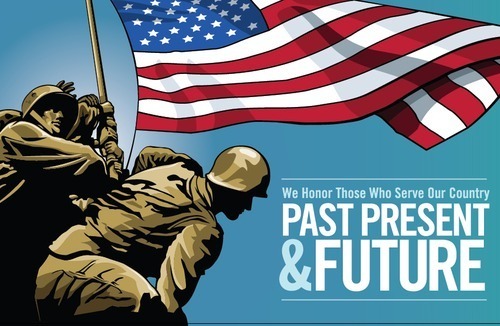
Troops to Truckers
TroopsToTruckers.com
Commercial truck driving is more than just a job—it’s a pathway to a fulfilling, stable, and well-paying career. For many, obtaining a Commercial Driver’s License (CDL) is the first step toward this rewarding profession, opening doors to diverse opportunities in logistics and transportation.
Whether it’s hauling goods across the country, delivering essential supplies to local businesses, or transporting materials for construction projects, CDL drivers are the backbone of our economy, ensuring that goods and services reach every corner of our country.
In this chapter, we’ll dive into what it means to have a CDL, the different classes of CDL licenses, and why obtaining a CDL can be a transformative decision.
What is a CDL?
A Commercial Driver’s License, or CDL, is a specialized license required to operate large, heavy, or hazardous material-bearing vehicles in the United States. A CDL allows drivers to legally operate commercial motor vehicles (CMVs) and is mandatory for anyone looking to enter the trucking industry as a professional driver.
Unlike a standard driver’s license, a CDL requires a deeper level of knowledge, skill, and responsibility, as commercial drivers handle vehicles that can weigh tens of thousands of pounds, carry valuable or sensitive cargo, and must often travel long distances under strict schedules.
To ensure safety on the road, federal regulations mandate that anyone operating certain types of vehicles must have a CDL. These regulations, overseen by the Federal Motor Carrier Safety Administration (FMCSA), include minimum standards for driving skills, medical requirements, and vehicle maintenance protocols that CDL holders must adhere to.
By setting these high standards, the FMCSA ensures that only qualified and trained individuals are entrusted with the responsibility of commercial driving.
The Different Classes of CDL
There are three main classes of CDLs—Class A, Class B, and Class C—each designed for specific types of commercial vehicles. The most common for long-haul trucking are Class A and Class B, and each offers unique career pathways and opportunities.
Class A CDL: A Class A CDL is the most comprehensive commercial license, allowing drivers to operate a wide range of vehicles, including tractor-trailers, tanker vehicles, livestock carriers, and flatbeds.
With a Class A CDL, drivers can tow trailers with a gross vehicle weight rating (GVWR) of more than 10,000 pounds, making this license ideal for those who want to drive long-haul routes, move heavy loads, or work in industries that require heavy transportation.
Due to the extensive scope of this license, Class A CDL holders often find themselves in high demand, with opportunities across various sectors.
Class B CDL: A Class B CDL allows drivers to operate single vehicles with a GVWR of 26,001 pounds or more, or to tow a trailer with a GVWR of no more than 10,000 pounds. This license is suitable for those interested in operating vehicles like dump trucks, large buses, delivery trucks, and certain construction vehicles.
While a Class B CDL may not offer the same range of job options as a Class A, it still provides access to a variety of stable and rewarding careers, particularly in local or regional driving roles.
Class C CDL: While less common in general trucking, a Class C CDL is necessary for drivers who transport hazardous materials or passengers (16 or more people) in vehicles that don’t meet the GVWR requirements of Class A or B. This class is typically more specialized and used in niche areas like hazardous material transport or shuttle services.
Why a CDL is a Gateway to a Stable Career
The trucking industry is one of the most resilient sectors in the economy. Goods and services need to move regardless of economic conditions, and with the increasing demand for e-commerce, supply chain efficiency, and just-in-time delivery models, CDL drivers remain indispensable. For individuals seeking a stable, rewarding career, obtaining a CDL provides numerous advantages:
High Demand for CDL Drivers: According to industry reports, there is a nationwide shortage of truck drivers, and the demand is only expected to grow in the coming years. This shortage translates to strong job security for CDL holders, as companies are eager to hire qualified drivers to fill essential roles in their logistics operations.
Competitive Pay and Benefits: Many CDL drivers enjoy competitive wages, and those willing to drive long-haul or specialize in areas like hazardous material transport can earn even higher pay. In addition, many transportation companies offer benefits like health insurance, retirement plans, and bonuses, making it a financially stable career choice.
Opportunities for Career Growth: CDL drivers have the chance to advance in their careers, whether by gaining experience to move into specialized or higher-paying roles or by transitioning into roles like dispatching, fleet management, or logistics planning. A CDL can be the foundation for a lifelong career in the transportation and logistics field, with pathways to management and beyond.
The Mission Behind TroopsToTruckers.com and MRC
TroopsToTruckers.com began with a simple but powerful mission: to support military veterans transitioning to civilian careers by connecting them with opportunities in the trucking industry.
After years of dedicated service, veterans often face challenges in finding stable, rewarding employment that aligns with their skills and values. The logistics and transportation sector, with its high demand for reliable and disciplined drivers, is a natural fit for veterans, especially those with experience driving military vehicles.
TroopsToTruckers.com recognizes how veterans possess many of the qualities that make excellent CDL drivers—discipline, focus, resilience, and a commitment to service. The trucking industry values these traits, and veterans often find a sense of purpose and camaraderie in this line of work that resonates with their military experiences.
TroopsToTruckers.com was created to provide veterans with the guidance, resources, and job placements they need to transition into civilian trucking careers successfully.
Through partnerships with training programs, trucking companies, and veteran support organizations, TroopsToTruckers.com has helped numerous veterans obtain their CDLs and start new careers on the road. If you are a veteran, visit them online.
The CDL Pathway: A Journey of Opportunity and Growth
Obtaining a CDL is more than just earning a license—it’s an entryway into a career that offers stability, purpose, and growth. Whether you’re a veteran transitioning to civilian life, someone seeking a career change, or a recent graduate exploring your options, the CDL pathway provides a clear and achievable route to a rewarding career.
In the following chapters, we’ll explore the characteristics of a reliable, well-trained, and safe CDL driver and what to look for in a transportation company that offers not only a job but a future.
CDL : Career, Education, Drivers, Employers is here to guide you through the journey, from understanding the CDL requirements to finding the right fit in a constantly evolving industry. With insights from TroopsToTruckers.com and MRC, you’ll gain a comprehensive understanding of what it takes to succeed and thrive in the world of commercial truck driving.
Welcome to the beginning of a transformative journey that can lead to a stable, well-paying career in an industry that values dedication, reliability, and resilience.
Whether you’re just starting or looking to take your driving career to the next level, the CDL pathway offers a world of opportunities—and this book is your guide.




Comments are closed